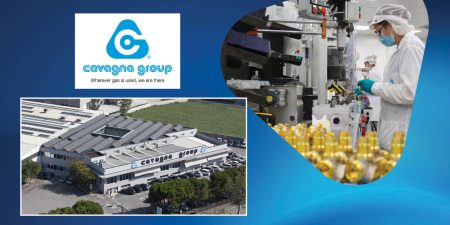by Randy MacLean, President of WayPoint Analytics
I’m not kidding. If you’re at the top of your company (or your department), your very job is all about change. That’s the principle functional difference between leaders and those who are led – leaders are responsible for finding new and better directions and guiding their teams to better results.
It’s your job
If you look around your organization and you see policies and processes that haven’t changed in years, you need to worry. If the consensus is you’re “under margin pressure” and “customer loyalty” has evaporated, those are warning bells alerting you to the lack of necessary and critical change in your company.
“If the rate of change on the outside exceeds the rate of change on the inside, the end is near.”
– Jack Welch, CEO of General Electric
Innovation?
The market is constantly evolving. New and improved products, services and methods surround us. Your most-capable competitors are experimenting with new processes and offerings, and the best customers are the best because they’re adopting the best new ideas before others do.
We grace this activity with the term “innovation,” but it’s really just the combination of: an institutional recognition of the importance of change; a vision that identifies new and better ideas; and courage to risk mistakes in order to reap the rewards of getting there before the other guys.
The Mathematics of Change
Awarding a 3% annual pay increase will result in your payroll costs increasing 30.5% across ten years, and 75.4% over twenty! The same is happening in your suppliers and logistics partners, further amplifying your costs when they pass the increases to you. You can’t be competitive with a complement of increasingly expensive people costing more – unless your organization has also been improving efficiency, employing its more knowledgeable and experienced team to continually improve the productivity of your team.
Are Your Experienced People Helping?
Regrettably, there’s a pretty common bias of long-term people to resist change, completely defeating their most important value – a deeper understanding of what needs to be done.
I’ll bet at least some of your long-term people already recognize each day as a new opportunity to contribute value by making the company measurably more capable. Making this universal throughout the organization is the key to profit and market leadership.
The Change Prevention Department
You really ought to have a hard look at yourself, too.
They say generals are always fighting the last war, and this is pretty darned common in distribution. Are you or other top people the “Change-Prevention Department” in your business?
Is there someone at the top who’s “always right” and quick to deride or punish people who make mistakes, or color outside the lines? This is sure to lock the whole company into the “safe” practices of the past, and the inevitable downward spiral of profits and cash-flow.
It’s important to have a mistake-tolerant culture which rewards, rather than punishes, out-of-the-box ideas. Best practices are the result of trying a rich spectrum of ideas and experiments, along with a culling process to drop those that prove ineffective. Best practices also require the continual shedding of older ideas that don’t work as well as they used to.
Don’t think you can wait until others prove them, then safely copy. Adopting “best practices” after everyone else negates the competitive advantages they confer.
Failure to change with the market (really, ahead of the market) risks losing you control of the company. Resulting erosion of cash-flow shifts focus to pleasing the bank instead of the customers, and makes the company vulnerable to predation by competitors and acquisition by more adept players.
I know this seems dire, but this is how important constant change is. I’ve seen it happen repeatedly. (And so have you.)
“If you dislike change, you’re going to dislike irrelevance even more.”
– Gen. Eric Shinseki, U.S. Army Chief of Staff
How to Get and Sustain Change
The good news is the benefits of changing with the market are entirely within your reach. It’s something you can do right now. Today.
The primary attribute of super-profitable distributors is they’re really, really good at their core mission – moving product. Specifically, they’re more efficient than their peers, meaning they move more product value per dollar spent than their competitors.
This is much, much more important than “go-to-market strategy,” “sales excellence,” “relationship selling” or any of the other buzzwords that we all hear at the industry meetings.
Operational excellence directly results in high efficiency, creating cost advantages and superior cash-flow. This funds everything from competitive pricing to superior customer service, which drives market share.
Creating a Change Culture
There are three general steps needed to create and sustain a culture for change: implement operational performance measures; train and educate on those performance measures; and have a mistake-tolerant management attitude which encourages people to experiment.
The analytic here comes from the field of LIPA (Line-Item Profit Analytics). This is a whole new category of advanced analytics stemming from the complete quantification of costs and profits down to the invoice-line level. LIPA and advanced analytics are the subject of my book, referenced below. (LIPA is what our WayPoint Analytics system provides for our clients.)
There are two classes of performance measures you’ll use to rapidly improve.
The first are efficiency measures like OpCash Ratios and ROX metrics, used for managers at all levels, and in nearly all areas. (OpCash is the LIPA term for gross profit.)
OpCash ratios quantify the profit potential (divide OpCash value handled in the target area, by expense dollars expended in the area). OpCash ratios guide priorities toward best opportunity, and toward efficiency increases that can come from controlling expenditures. OpCash ratios set the stage for profits by maximizing product value moved per dollar expended.
ROX (Return on Expenses) metrics quantify the actual result (divide operating profit generated in the target area, by expense dollars expended). ROX shows the result of focusing on activities in areas of best opportunity, and also closely managing expenses in those same areas.
Improvements in efficiency measures support payroll increases and are useful comparatives for management effectiveness. (Hint: use efficiency measures for paying incentives and choosing which people to promote. You certainly want those with a track record for efficiency gains leading and mentoring subordinates.)
Neither of the two efficiency measurement classes are directly controllable but are, instead, affected by productivity measures, which are controllable.
Productivity measures divide a number representing value, by a number representing something you can count. Examples are: OpCash ÷ picks; OpCash ÷ deliveries; Revenue ÷ orders; OpCash ÷ warehouse sq ft, etc.
Productivity measures indicate areas of focus which will produce real gains, and may suggest where investments in automation, reorganization or training will have a positive impact on the downstream efficiency measures that drive company cash-flow and profits.
The Value of Mistakes, and the Danger of Avoiding Them
Most often, a fear of being seen as making a mistake will completely hobble a company’s ability to thrive, or even survive.
An absence of mistakes is the hallmark of a company that’s doomed. Doomed to, at best, occupy a position in the tail-end of the pack or, at worst, to underperform until it’s acquired or fails.
A company avoiding strategic or tactical mistakes isn’t innovating, it’s waiting to see what others are doing and later adopting practices with wide industry consensus. Effectively, it’s “a day late and a dollar short”.
This is hardly a customer-attracting market position, with companies in this mode coasting on prior momentum while cash-flow evaporates, while margins and market share erode. This is clearly not a sustainable position.
What’s the Take-Away?
Far from being the safe position, stasis will kill your business.
Change isn’t hard – it’s almost natural, and shifting to a change culture can be richly rewarding.
Instituting a change culture by: implementing operational performance measures; training and educating on those performance measures; and creating an experiment-encouraging, gain-rewarding environment.
Your objective is to be the first to implement changes that enhance your operational efficiencies and your operational excellence. You’ll get the benefits of the new practices until your competitors eventually adopt them. Until then you’ll enhance customer success, driving gains in customer experience and company profits.
Mistakes are the price of admission. Get out there and make a few…
This article is adapted from a section in Profit-Driven Analysis & Practices: The CEO’s Guide to Record Profits by Randy MacLean (ISBN: 979-8589295375). The book explains the field of LIPA (Line-Item Profit Analytics), and how you can use its unique metrics and strategies to out-perform everyone else in cash-flow, profits, and market share. (Get it on Amazon at https://amzn.to/3tjr2VM) If you’d like to know more, you can reach me at 480-426-9955 or email me at [email protected].









